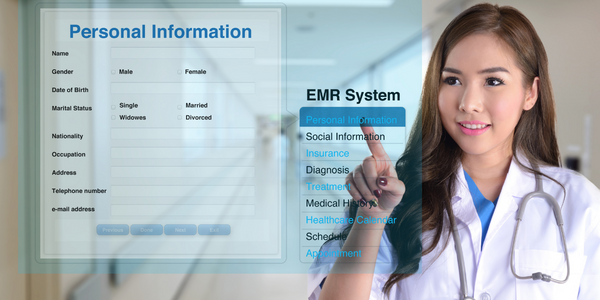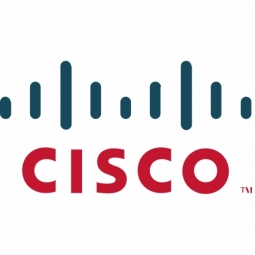
技术
- 网络与连接 - 网络管理和分析软件
适用行业
- 医疗保健和医院
适用功能
- 商业运营
客户
库克儿童医疗保健系统
关于客户
挑战
网络应用程序,例如电子病历 (EMR) 或电子健康记录 (EHR),对于 Cook Children's 为其患者和医生提供出色的服务至关重要。随着其网络变得越来越复杂,数据来自各种无线医疗设备和可穿戴设备,以及远程托管应用程序,问题浮出水面。该组织的网络经理发现了一系列问题,包括用户体验缓慢、网络监控挑战以及无法主动识别应用程序性能问题。
解决方案
在仔细搜索替代方案后,Ixia 的网络工具优化器 (NTO) 在网络接入点之间实施,以增强 APM 平台的网络流量可见性。选择 OPNET AppResponse Xpert 来满足 APM 要求。
• APM——OPNET APM Xpert 套件支持 24x7 应用程序事务监控、数据包存储和网络分析,同时为依赖映射、SNMP 报告、数据库监控和部署前应用程序测试提供集成的软件插件。
• 聚合和过滤——实施 Ixia NTO 以聚合来自多个 10G SPAN 的流量,并在过滤掉重复数据包后将其定向到 OPNET 设备。 “NTO 使得从我们数据中心的任何地方向我们的 OPNET AppResponse Xpert 提供所需的所有流量变得非常简单和高效,”Cook Children's Health 的网络经理 Ross Jones 说。 “删除不需要的重复数据包是一个巨大的好处。”
收集的数据
Network Performance (bits/s), Electronic Medical Record, Network Traffic
运营影响

Case Study missing?
Start adding your own!
Register with your work email and create a new case study profile for your business.
相关案例.

Case Study
Hospital Inventory Management
The hospital supply chain team is responsible for ensuring that the right medical supplies are readily available to clinicians when and where needed, and to do so in the most efficient manner possible. However, many of the systems and processes in use at the cancer center for supply chain management were not best suited to support these goals. Barcoding technology, a commonly used method for inventory management of medical supplies, is labor intensive, time consuming, does not provide real-time visibility into inventory levels and can be prone to error. Consequently, the lack of accurate and real-time visibility into inventory levels across multiple supply rooms in multiple hospital facilities creates additional inefficiency in the system causing over-ordering, hoarding, and wasted supplies. Other sources of waste and cost were also identified as candidates for improvement. Existing systems and processes did not provide adequate security for high-cost inventory within the hospital, which was another driver of cost. A lack of visibility into expiration dates for supplies resulted in supplies being wasted due to past expiry dates. Storage of supplies was also a key consideration given the location of the cancer center’s facilities in a dense urban setting, where space is always at a premium. In order to address the challenges outlined above, the hospital sought a solution that would provide real-time inventory information with high levels of accuracy, reduce the level of manual effort required and enable data driven decision making to ensure that the right supplies were readily available to clinicians in the right location at the right time.

Case Study
Gas Pipeline Monitoring System for Hospitals
This system integrator focuses on providing centralized gas pipeline monitoring systems for hospitals. The service they provide makes it possible for hospitals to reduce both maintenance and labor costs. Since hospitals may not have an existing network suitable for this type of system, GPRS communication provides an easy and ready-to-use solution for remote, distributed monitoring systems System Requirements - GPRS communication - Seamless connection with SCADA software - Simple, front-end control capability - Expandable I/O channels - Combine AI, DI, and DO channels

Case Study
Driving Digital Transformations for Vitro Diagnostic Medical Devices
Diagnostic devices play a vital role in helping to improve healthcare delivery. In fact, an estimated 60 percent of the world’s medical decisions are made with support from in vitrodiagnostics (IVD) solutions, such as those provided by Roche Diagnostics, an industry leader. As the demand for medical diagnostic services grows rapidly in hospitals and clinics across China, so does the market for IVD solutions. In addition, the typically high cost of these diagnostic devices means that comprehensive post-sales services are needed. Wanteed to improve three portions of thr IVD:1. Remotely monitor and manage IVD devices as fixed assets.2. Optimizing device availability with predictive maintenance.3. Recommending the best IVD solution for a customer’s needs.

Case Study
HaemoCloud Global Blood Management System
1) Deliver a connected digital product system to protect and increase the differentiated value of Haemonetics blood and plasma solutions. 2) Improve patient outcomes by increasing the efficiency of blood supply flows. 3) Navigate and satisfy a complex web of global regulatory compliance requirements. 4) Reduce costly and labor-intensive maintenance procedures.

Case Study
Cloud-based healthcare solution for Royal Philips
Royal Philips wanted to launch its cloud-based healthcare solution HealthSuite Digital Platform in China to deliver services to help cope with challenges related to urbanization and population growth. Philips wanted to achieve this goal by combining mobile, cloud computing and big data technologies. To bring this platform and product to market, Philips required cloud computing and local technical service capabilities in China, in addition to a flexible IT infrastructure that could handle user requests.








